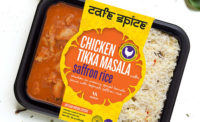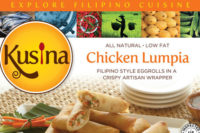Ramar Foods explains Filipino cuisine
Ramar Foods, a 3rd-generation producer of Filipino specialties, is helping to introduce a trendy cuisine to mainstream America.






The days of lumping Japanese, Chinese, Thai and Filipino cuisine into the generic “Asian food” category are gone. Consumers are more educated about ethnic foods than ever before, and the diversity of food within the Asian world is too great to be stuck in one generic grouping.
Food from the Philippines, for instance, takes some traditional Asian food and merges it with influence from years of Spanish and American colonialism. Favorites include noodles (pancit) and spring rolls (lumpia), steamed buns, sausages and more. Filipino cuisine was, according to a recent article in Forbes, one of the top restaurant trends from 2016 and is sure to carry over into 2017. Understanding Filipino food and recreating it for a wider audience requires an understanding of the country, its history and its people.
“The quick, essential flavor profile for most Filipino cuisine is that of sourness,” explains PJ Quesada, vice president of Ramar Foods. “That’s often [achieved] using vinegar – there are actually many types of vinegars that are native to the Philippines and are used in cooking.”
Ramar Foods is a third-generation Filipino food company, manufacturing everything from ice cream to longanisa sausages. Last year, the company made its billionth lumpia, spring rolls that can be filled with vegetables or cured meats.
Quesada notes that consumers perceive Asian food in a different light thanks to several factors, including social media.
“As consumers are looking for video content and game content, there is one piece of content that cannot be replicated on social media, and that is the food experience. While there are a lot of images of food shared on social media, the only way to really experience that is to actually go try it yourself,” he says.
He also points to television personalities like Anthony Bourdain and Andrew Zimmern, who go to foreign countries or ethnic communities, using the food as a narrative in their travels. Consumers gain enough interest that they will seek out a Filipino restaurant, and if they can’t do that, they’ll buy a product at the grocery store — like one of Ramar Foods’ products —and try to replicate that experience at home.
“When you combine the diverse population, the advent of social media the advent of food as entertainment, I think you have this trifecta of knowledge being shared at a rapid rate, and people are becoming fans,” Quesada says.
Meat is a key ingredient in many Filipino dishes. Longanisa sausage is a popular breakfast item, and Ramar makes it in different flavor profiles under three different brand names, corresponding to regions of the Philippines.
“The region that originated Filipino sausage was called Vigan. They are known for cooking extremely sour flavors. One of our longanisa sausage products is cooked in that style, and we use vinegar and garlic as the primary flavoring components,” Quesada says.
Unlike the typical sausages seen in the United States, longanisa sausage typically comes in shorter links.
“The Spanish are actually the ones that brought the sausage making process to the Philippines,” he explains. “In the Philippines, being a developing country, smaller portions are typically what the order of the day is, so the smaller links became quite popular.”
Subscribe to our new eNewsletter, Independent Processor’s Prime Cuts, for an extended talk with PJ Quesada about Ramar Foods and Filipino cuisine in our February edition.
Looking for a reprint of this article?
From high-res PDFs to custom plaques, order your copy today!









